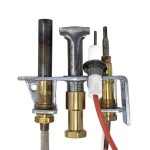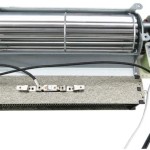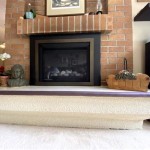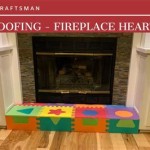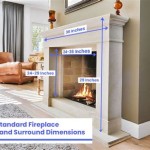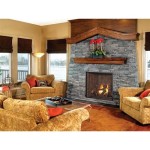Fireplace Insert Covers: Protection, Aesthetics, and Efficiency
A fireplace insert cover is a protective and often decorative accessory designed to conceal and safeguard a fireplace insert when it is not in use. These covers serve multiple purposes, ranging from preventing drafts and debris from entering the home to enhancing the aesthetic appeal of the fireplace area. The selection and proper use of a fireplace insert cover are important considerations for homeowners seeking to maintain the cleanliness, safety, and visual harmony of their living spaces.
Fireplace inserts themselves are heating appliances designed to fit into existing masonry fireplaces. They offer increased heating efficiency compared to traditional open hearth fireplaces by providing a controlled combustion environment and directing heat into the room. However, when the insert is not in operation, the opening can become a source of drafts and a collection point for dust, insects, and other unwanted materials. This is where a well-chosen fireplace insert cover proves invaluable.
The market for fireplace insert covers offers a diverse range of options, varying in materials, styles, and functionalities. Understanding the key aspects of these covers is essential for making an informed purchasing decision. This article will explore the benefits, types, selection criteria, installation considerations, and maintenance practices associated with fireplace insert covers.
Benefits of Using a Fireplace Insert Cover
The primary benefit of using a fireplace insert cover is the protection it provides against drafts. During colder months, even with the damper closed, some air leakage is almost inevitable. This can lead to uncomfortable temperature fluctuations and increased heating costs, as the furnace or other heating system must work harder to compensate for the cold air entering through the inactive fireplace. A fireplace insert cover creates a physical barrier that significantly reduces or eliminates this draft, contributing to a more energy-efficient home.
Another key advantage is the protection from debris and pests. A fireplace opening is an inviting entry point for dust, leaves, twigs, and even small animals or insects. Over time, the accumulation of debris can create an unsanitary environment and potentially attract rodents or other pests. A well-fitting cover effectively seals off the opening, preventing the entry of these unwanted elements and maintaining a cleaner living space.
Beyond the practical benefits, fireplace insert covers also contribute to the overall aesthetics of the room. Many covers are designed to complement the existing décor, offering a variety of styles, finishes, and materials. A decorative cover can transform an otherwise dormant fireplace into a visually appealing focal point, enhancing the ambiance of the room. This is particularly useful during the warmer months when the fireplace is not being used for heating purposes.
Moreover, fireplace insert covers can provide an added layer of safety, especially in homes with young children or pets. A cover can prevent accidental contact with the potentially sharp edges of the insert, reducing the risk of minor injuries. It also prevents children or pets from exploring the interior of the fireplace and potentially encountering soot, ash, or other harmful substances.
Types of Fireplace Insert Covers
The market offers a range of fireplace insert covers, each with its own characteristics and suited for different needs and preferences. One common type is the magnetic fireplace cover. These covers typically consist of a thin sheet of flexible magnetic material, often with a decorative facing. They are designed to adhere directly to the metal surface of the fireplace insert opening, providing a tight seal. Magnetic covers are relatively easy to install and remove, making them a convenient option for occasional use or seasonal changes.
Another popular type is the fabric or quilted fireplace cover. These covers are made from durable fabrics like canvas or polyester, often with a quilted or insulated lining. They are typically held in place by elastic bands, Velcro straps, or drawstrings. Fabric covers offer a softer aesthetic compared to metal or rigid covers and can be easily customized with different colors or patterns. They also provide some degree of insulation, further enhancing their draft-blocking capabilities.
Rigid fireplace insert covers, often made from metal or wood, offer a more substantial and permanent solution. These covers are typically custom-made or semi-custom to fit the specific dimensions of the fireplace opening. They may be secured with screws, brackets, or other fasteners. Rigid covers provide a high level of protection and can be designed to seamlessly integrate with the surrounding décor. They are often chosen for their durability and aesthetic appeal.
In addition to these standard types, there are also inflatable fireplace plugs or pillows. These are inflatable bags made from durable plastic or rubber. They are inserted into the fireplace opening and then inflated to create a tight seal. Inflatable plugs are particularly effective at blocking drafts and preventing the entry of cold air. They are relatively easy to install and remove and can be deflated for compact storage when not in use.
Each type of cover has advantages and disadvantages. Magnetic covers are convenient and easy to use but may not be suitable for all insert types. Fabric covers offer aesthetic flexibility but may not provide the same level of protection as rigid covers. Rigid covers offer durability and a custom fit but are typically more expensive and require more installation effort. Inflatable plugs are effective at draft blocking but may not be as visually appealing as other options.
Factors to Consider when Selecting a Fireplace Insert Cover
Selecting the right fireplace insert cover requires careful consideration of several factors. The first, and perhaps most important, is the size and shape of the fireplace opening. Accurate measurements are essential to ensure a proper fit. A cover that is too small will not provide adequate coverage, while a cover that is too large may be difficult to install and may not create a tight seal. It is recommended to measure the width, height, and depth of the opening to ensure the cover will fit snugly.
The material of the cover is another important consideration. Different materials offer different levels of protection, durability, and aesthetic appeal. Metal covers are typically durable and provide a high level of protection but may not be as visually appealing as fabric or wood covers. Fabric covers offer aesthetic flexibility but may not be as durable as metal covers. The choice of material will depend on the specific needs and preferences of the homeowner.
The style and design of the cover should also be considered. The cover should complement the existing décor of the room and enhance the overall aesthetic appeal of the fireplace area. Consider the color, texture, and pattern of the cover and how it will blend with the surrounding furnishings. Many manufacturers offer a variety of styles and finishes to choose from, allowing homeowners to find a cover that perfectly matches their taste.
Ease of installation and removal is another factor to consider. Some covers are easy to install and remove, while others require more effort. Magnetic and fabric covers are typically the easiest to install, while rigid covers may require more installation effort. Consider how often the cover will be used and whether it will need to be removed frequently. If the cover will be removed and replaced often, a simple and easy-to-use design is preferable.
Finally, the price of the cover should be considered. Fireplace insert covers range in price from relatively inexpensive magnetic or fabric covers to more expensive custom-made rigid covers. Set a budget before shopping and compare the prices of different options to find a cover that fits within the budget. Consider the long-term benefits of the cover, such as reduced energy costs and protection from debris, when evaluating its overall value.
Beyond these core considerations, homeowners should also assess the specific climate conditions and usage patterns of their fireplace. In particularly cold climates, a cover with a higher insulation value might be preferred. If the fireplace is frequently used, a cover that is easy to remove and replace would be beneficial. Consideration of these nuances will lead to a more satisfying and effective selection.
It is also advisable to check customer reviews and ratings before purchasing a fireplace insert cover. Reading reviews from other homeowners can provide valuable insights into the quality, durability, and performance of different covers. Pay attention to reviews that mention ease of installation, effectiveness at blocking drafts, and overall satisfaction with the product.
It is also important to ensure that the fireplace insert cover is compatible with the specific type of fireplace insert. Some covers may not be suitable for certain types of inserts, such as those with protruding handles or vents. Consult the manufacturer's instructions or contact the retailer to confirm compatibility before making a purchase.
By carefully considering these factors, homeowners can select a fireplace insert cover that meets their specific needs and preferences, providing protection, enhancing aesthetics, and improving energy efficiency.

Diy Birch Wood Fireplace Cover For A Faux Insert

Diy Fireplace Cover Tutorial Ehow Build A

Fireplace Cover Screen Insert

Build A Fireplace Insert Draft Stopper Cover Farmhouse

26 Best Fireplace Cover Ideas Diy

How To Make A Diy Rust Fireplace Cover Salvaged Living

Fireplace Insert Installation Wood Inserts Gas Pellet And Electric

Wood Burning Fireplace Inserts 1 Stove Insert Dealer

47 In L Black 3 Panel Steel Draft Guard Cover Dgc 02 The Home Depot

Diy Fireplace Makeover With High Heat Paint Jessica Welling Interiors
Related Posts

